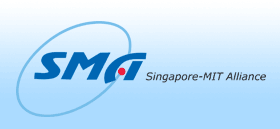Project Abstract:
A new artificial composite medium, called metamaterials has
attracted more and more scholars. These materials have special
characteristics those are not found in nature and not observed in
the constituent materials. The properties of these composites are
not determined by the fundamental physical properties of their
constituents but by the shape and distribution of specific patterns
included in them. There are various models for description the
characteristics of electromagnetic waves with metamaterials. In
general, there are two kinds. One is to directly make use of the
electromagnetic numerical simulation tools, such as method of
integral equations (IEs) and finite different time domain (FDTD)
method, to investigate the electromagnetic characters of the whole
structure. The other is to evaluate the effective constitutive
parameters of the composite structure, then develop numerical
simulation tools to predict the electromagnetic performance of this
complex medium. We present the second method and deduce the
effective constitutive parameters by using quasi-static Lorentz theory
and numerical simulation first. We will design the composites with
special shaped inclusions those have special optical properties and
a broad range of applications after we develop the simulation codes.
|


